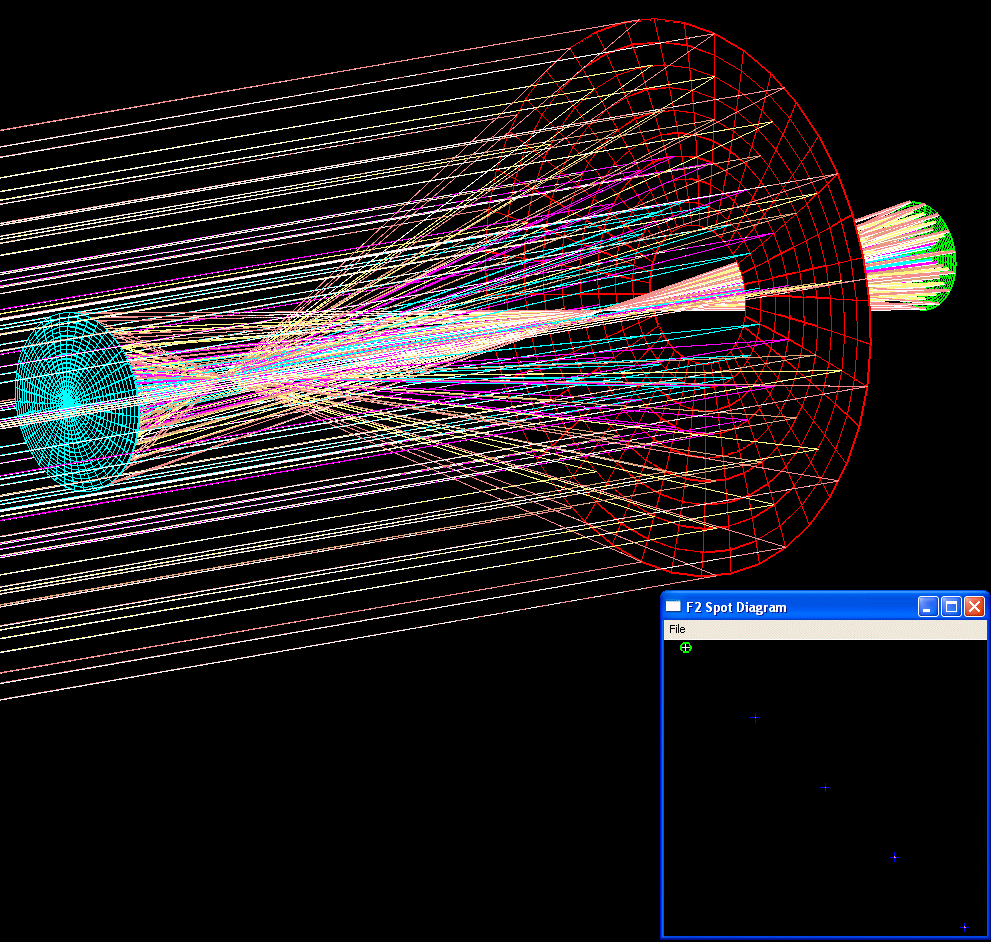
Procedural Ray Tracing |
||
The talk, Procedural Ray Tracing, was presented to the Optical Society of Northern California on January 21, 2003. An excerpt from that announcement: |
||
|
Many seasoned optical practitioners are surprised to learn there is a more fundamental way to configure an optical system than from a tweaked assemblage of conic sections and polynomial aspheres. Consider the telescope presented to the Optical Society by Mertz as one example defined from first principle application of Fermat's Theorem and the Abbe sine condition. In this example, the a priori knowledge of on-axis aplanatic imaging (no spherical and linear comatic defects,) begs the question: how good is the off-axis imaging performance?
Surprisingly-- and still not understood-- these first principle approaches sometimes yield surfaces that do not readily lend themselves to sufficiently accurate mathematical descriptions. Conventional ray trace codes cannot be brought to bear on the proposition. However, by applying simple geometrical concepts, the information contained from first principle systems can be exploited to yield a precise, off-axis ray trace answer, even though there are no mathematical definitions of system surfaces. This approach to ray trace analysis developed by the speaker is called 'Procedural Ray Tracing.' |
||
[Today it is fashionable to refer to Procedural Ray Tracing as 3D Simultaneous Multiple Surface Design. 3D Simultaneous Multiple Surface Design is typically used to design non-imaging optics. For the Mertz telescope, I apply Procedural Ray Tracing to an imaging system with two constraints: wavefront (Fermat's theorem) and aplanatic imaging (Abbe sine condition.)]
The only known way of accurately analyzing these systems is with this technique. Using Procedural Ray Tracing, it is now known that the Mertz Telescope can only operate diffraction limited in the visible for fields of approximately 3 arc minutes with apertures of around 1 meter. The reason? Though the correction mirrors in Mertz's design do correct for spherical and linear coma, they possess higher order aberrations that degrade performance as the aperture size is increased. Therefore, this concept is not suitable for large aperture designs.
Other types of telescopes can be specified from first principles though, and Procedural Ray Tracing would be an invaluable tool for analysis.
You can download my 3D graphics program to view and interact with this telescope. The program is written for Windows and runs best with an installed 3D graphics accelerator card (which is mistakingly thought of as the exclusive province for PC games.) The code takes about 15 seconds to execute on a 2.24 GHz Pentium. The keyboard and mouse interfaces are described here, and is best viewed in Word or Wordpad.
